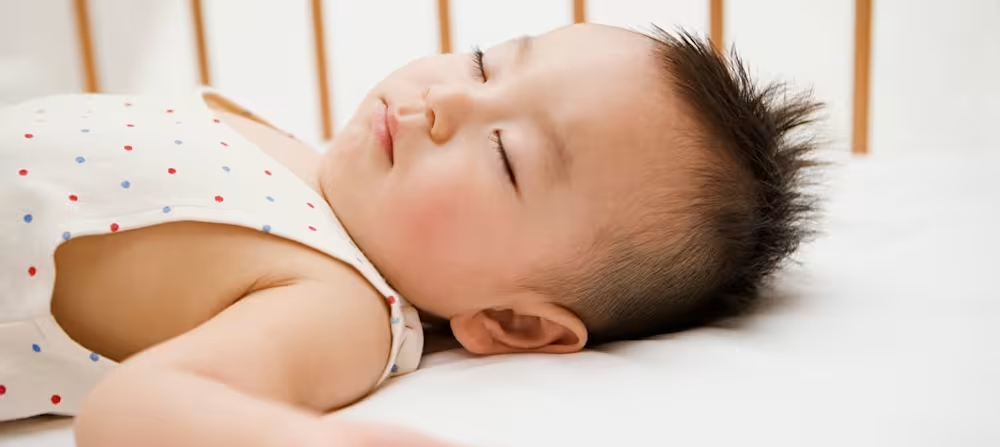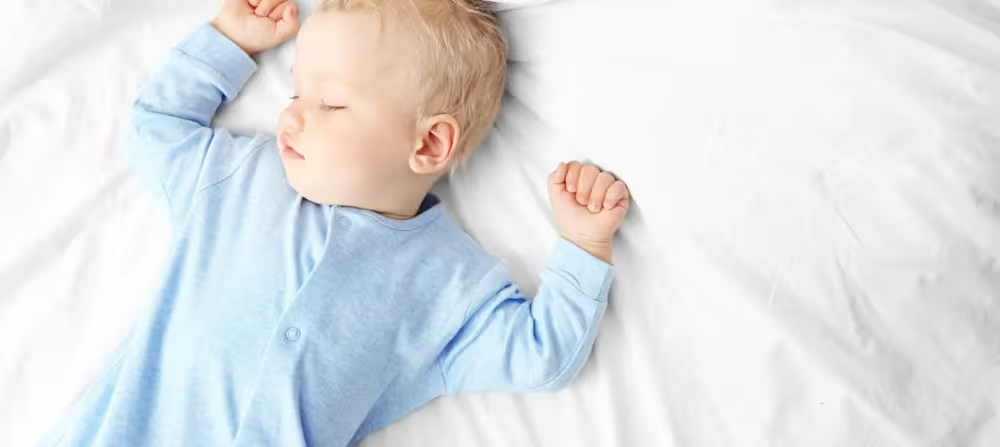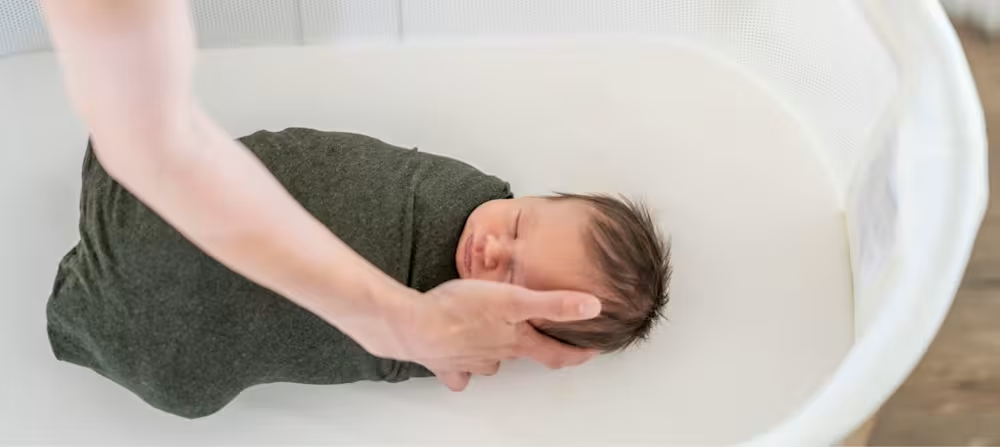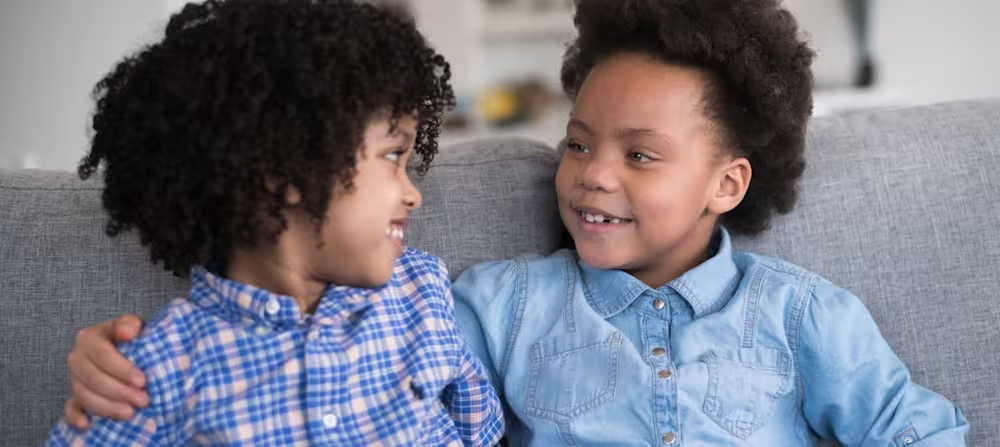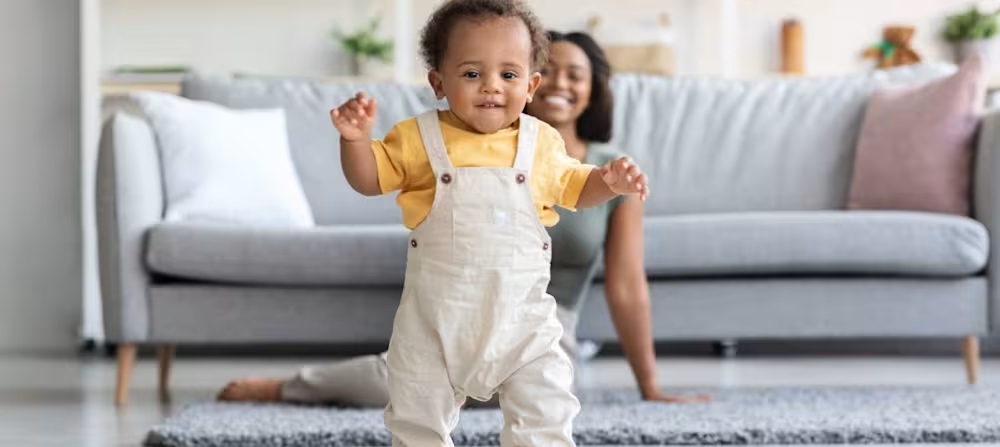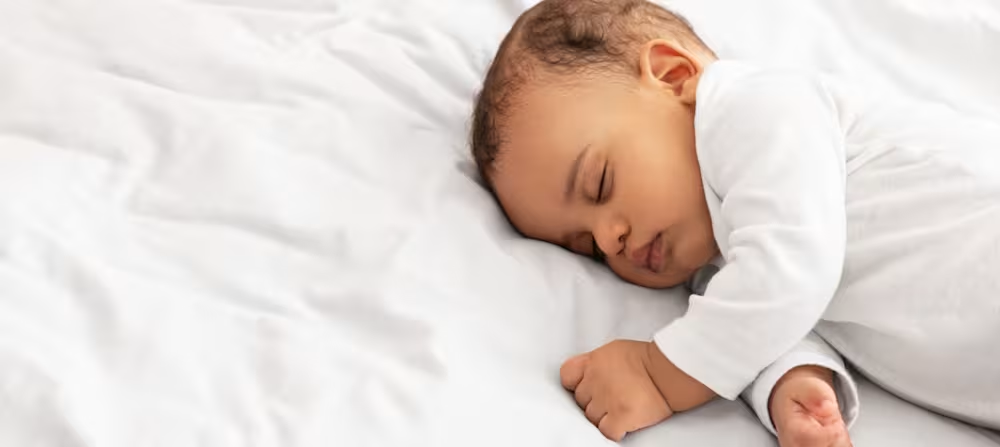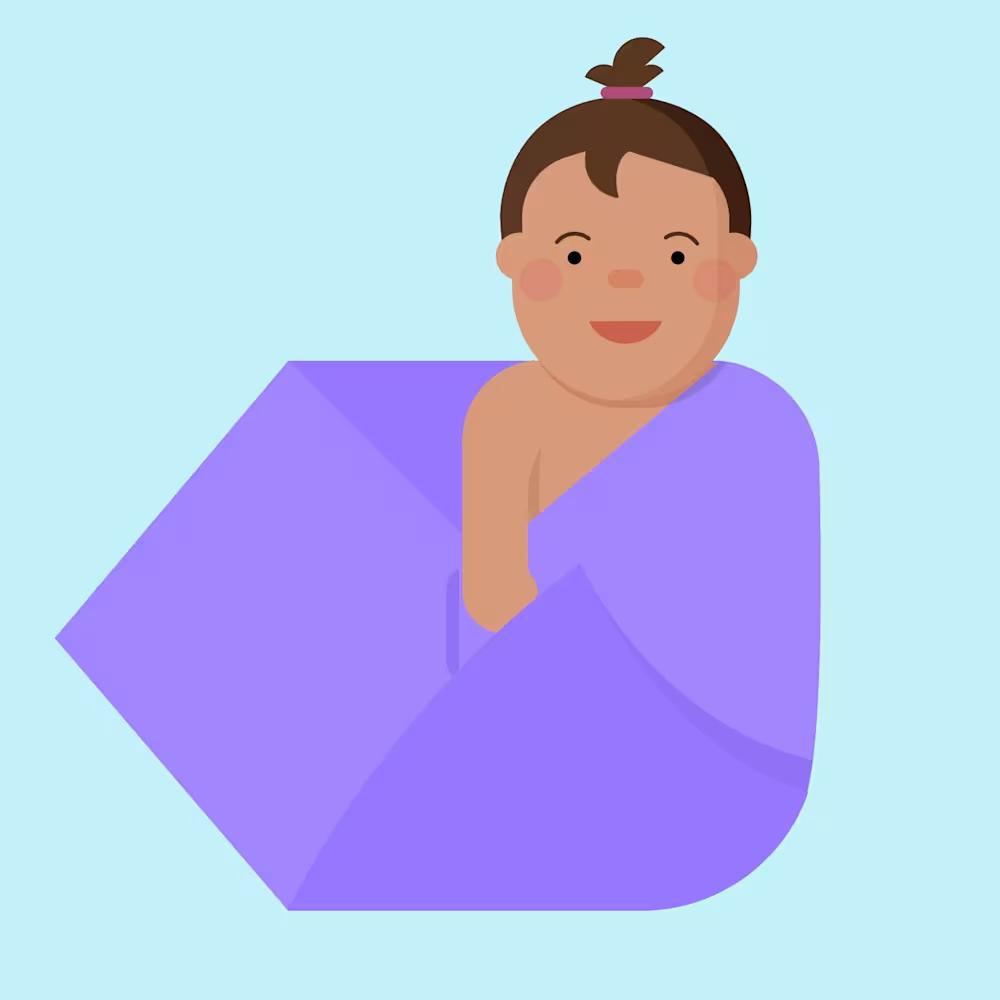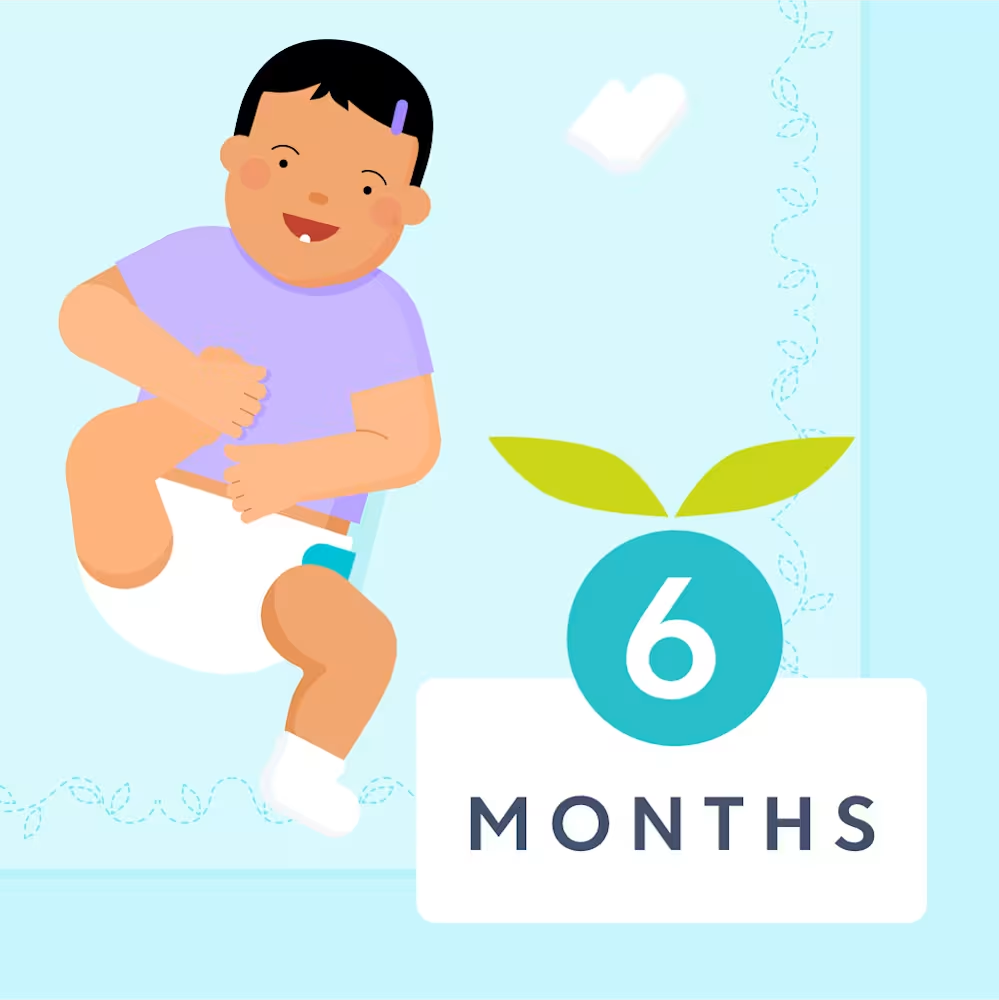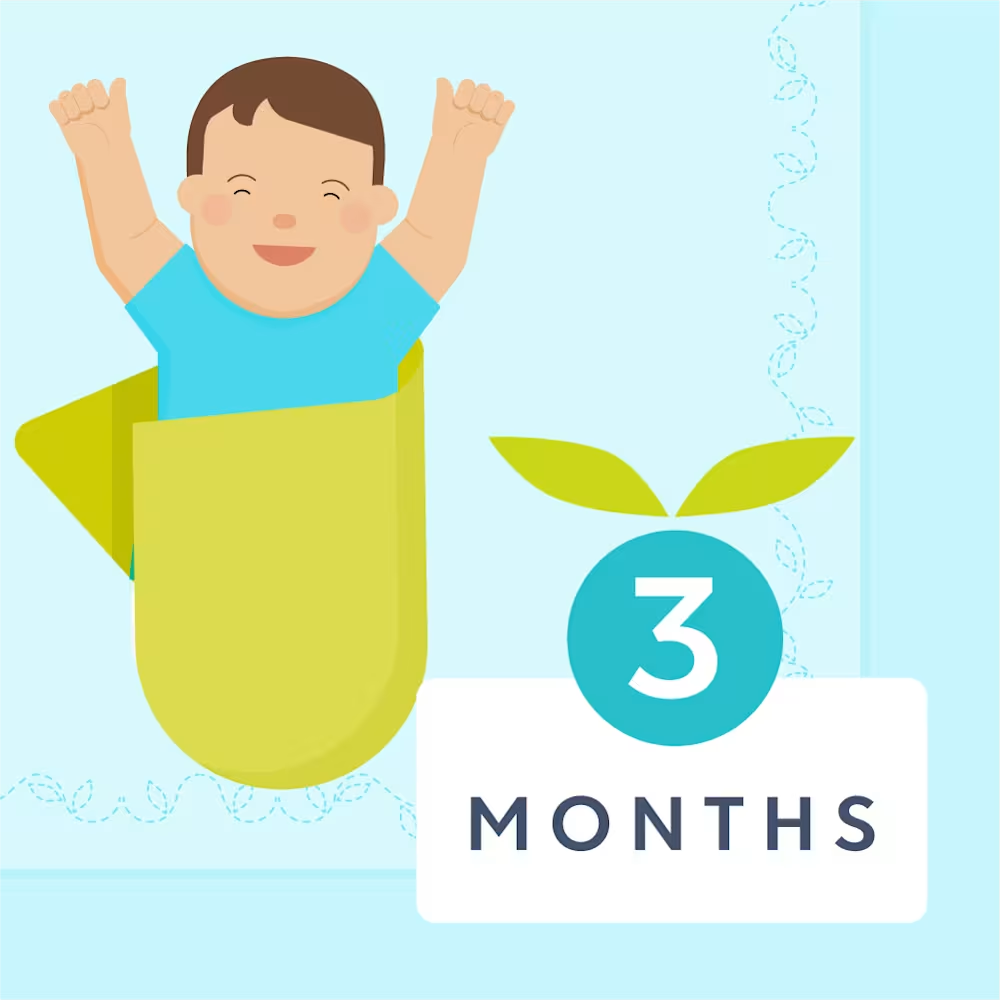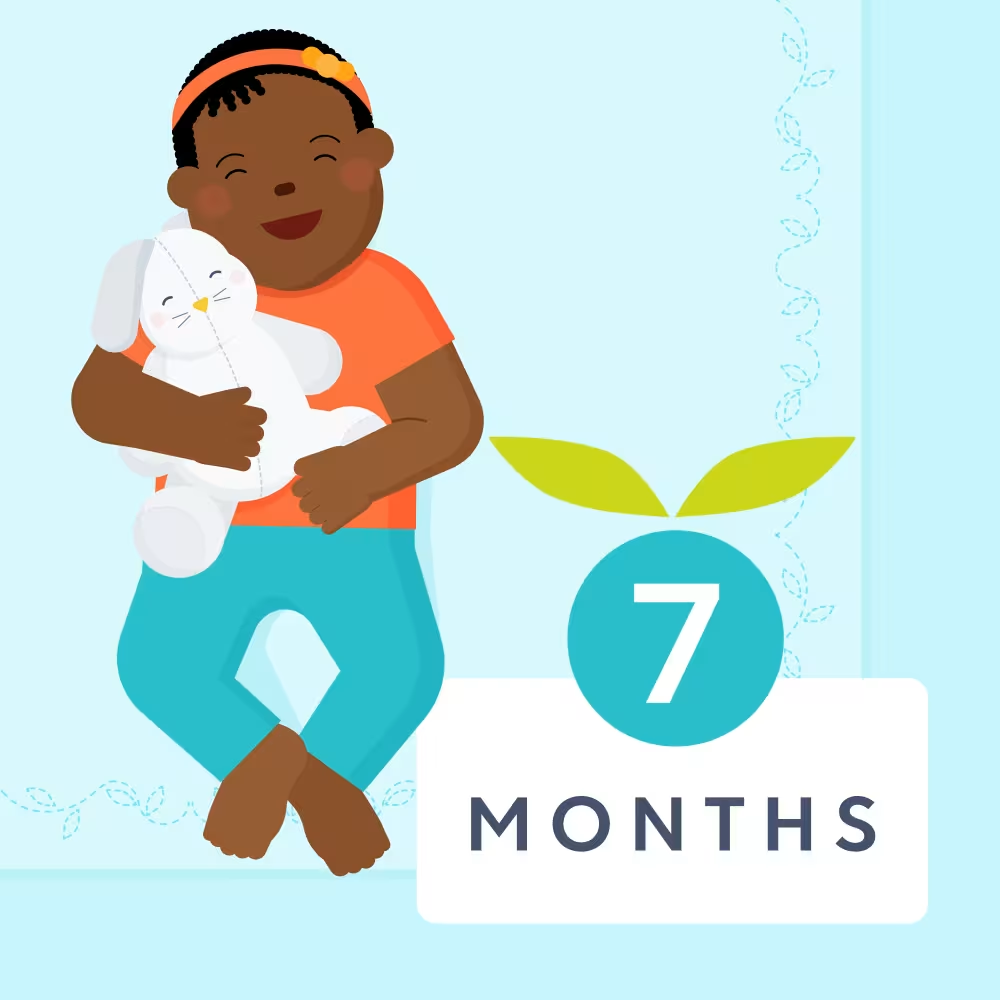7 crib safety tips and checklist: A guide to safe sleep
Updated Oct 16, 2025

During the first year of their life, babies spend more time sleeping than awake. Since safety guidelines are always evolving, we’ve outlined the most important things you’ll need to know to ensure your baby has a safe sleep space. From choosing the right crib to setting up the sleep environment, here’s what you should know according to current guidelines.
What is safe sleep?
"Safe sleep" refers to various practices and standards that promote the well-being of babies and children when they're sleeping (or falling asleep). When we talk about “safe sleep,” we’re referring to two categories: (1) the sleep space itself (i.e., the furniture), and (2) the conditions within the sleep space. You’ve probably already figured out that we’re obsessed with improving sleep at Huckleberry and safety is also a top priority.
What are the crib safety standards to know about?
In 2022, the American Academy of Pediatrics (AAP) Task Force on SIDS (sudden infant death syndrome) issued an updated policy statement [] on safe sleep, which recommends using a crib, bassinet, portable crib, or play yard that meets the safety standards of the Consumer Product Safety Commission (CPSC).
Crib safety checklist
Keep the following in mind when choosing a crib:
Antique cribs are out
No modified, broken, or dropside cribs
Examine the gaps
Inspect the slats
Assess the hardware
Check the corner posts
Avoid cutouts
Find more details below:
1. Antique cribs are out
It can be so helpful when generous friends and relatives offer second-hand baby gear. However, it’s important to know that the CPSC warns against using cribs that are older than 10 years.
2. No modified, broken, or dropside cribs
The AAP and CPSC [] also caution parents to avoid using cribs that are broken, modified, or have a dropside design.
3. Examine the gaps
According to the CPSC, crib slats should be no more than 2 3/8 inches apart. This helps prevent a baby’s body from fitting through the slats.
4. Inspect the slats
Check for missing or cracked slats. All slats should be present and in good condition.
5. Assess the hardware
Make sure all of the screws, brackets, and hardware are installed properly. We don’t want any missing, loose, broken, or improperly installed parts on the crib or the mattress support.
6. Check the corner posts
Any corner posts should be no more than 1/16th inch high, so your baby's clothing cannot catch.
7. Avoid cutouts
Pass on cribs that have cutouts in the headboard or the footboard, as these pose a risk of the baby’s head getting trapped.
How to put your baby in the crib for safe sleep
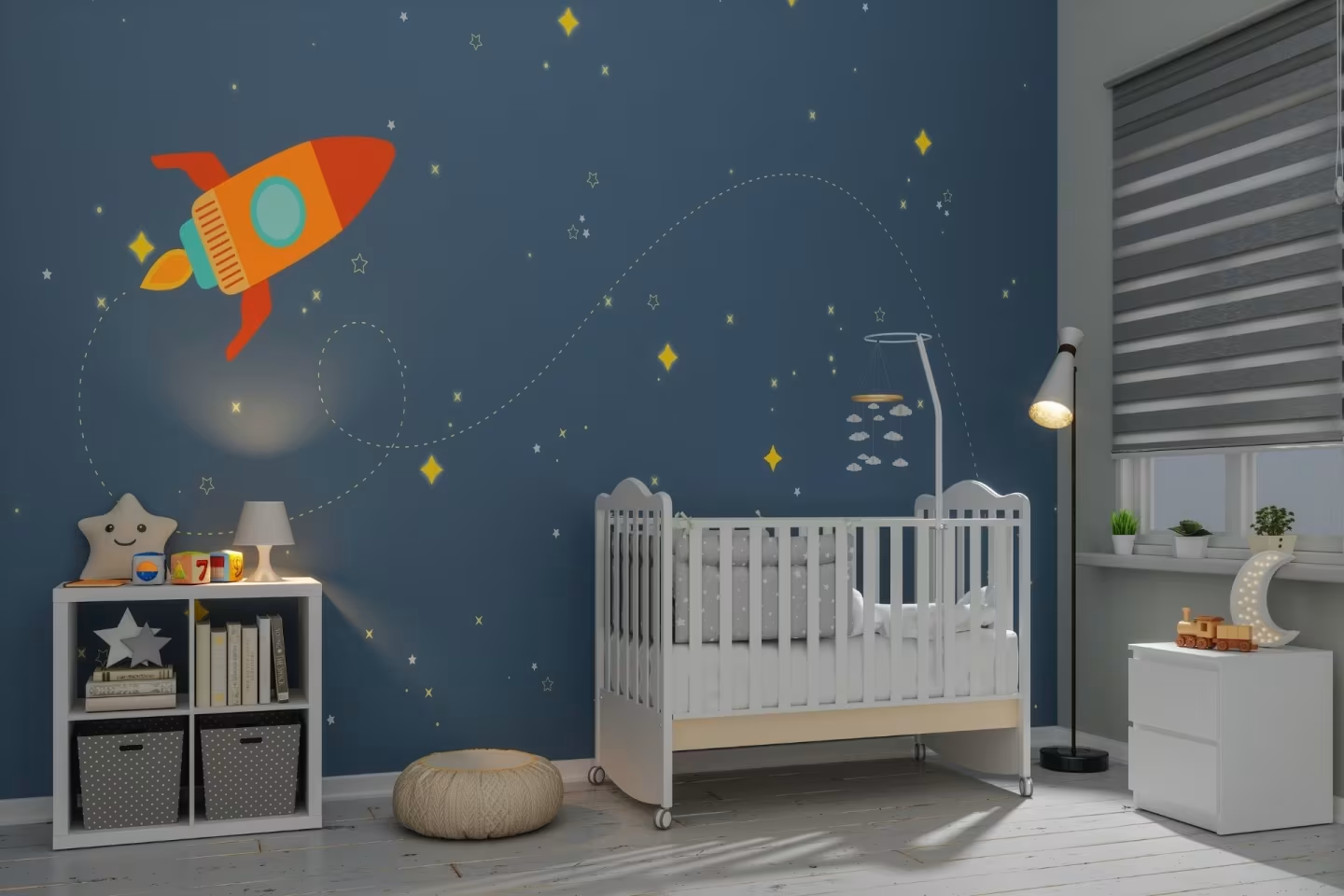
Once we’ve made sure the crib is safe, we’ll turn our attention to the “hows” involved in safely putting your infant in the crib for sleep. Note that some of these guidelines only apply to babies under 12 months of age. We’ll add an asterisk next to those.
1. Mattress should be firm and tight-fitting
Use a firm, tight-fitting mattress. Ensure that there are no gaps larger than two fingers between the sides of the crib and the mattress to prevent getting trapped between the mattress and crib.
2. Crib should be bare*
To prevent suffocation, keep pillows, quilts, comforters, sheepskins, pillow-like bumper pads, or pillow-like stuffed toys out of the crib. Consider using a sleepsack once you’ve transitioned out of the .
3. Back is best*
Place your baby on their back in the crib for sleep. Once a baby starts to roll, it’s usually OK for them to remain sleeping on their stomachs [] if they roll themselves that way (assuming a firm, flat surface without soft objects or loose bedding), but please confirm with your pediatrician, who knows your child's health history and development.
Along these lines, as your baby gets older and begins to outgrow their crib, it's important to watch for the signs it's time to .
4. Keep cords away
Never place a crib near a window with blinds, curtain cords, or baby monitor cords, as they have the potential to strangle.
5. Reduce volume on noise machines
In a 2014 study [], 14 were tested for safety. All of the machines at maximum output exceeded hospital-recommended noise levels. As a result, the AAP recommends placing noise machines at least 7 feet (200 centimeters) away from a baby’s sleep space and lowering the volume below the maximum volume setting. Ideally, the volume should be no louder than 50 decibels, or the volume of an average vacuum cleaner or hair dryer.
6. Same room, separate beds
The AAP recommends [] sharing a room for at least 6 months, ideally a year. However, according to the AAP and the public health campaign from the National Institute of Child Health and Human Development [], babies should be placed in a separate sleeping area rather than share a bed with you. We know this can be a challenge, so we also have tips for .
It’s important to acknowledge that many families do choose to bed-share despite the potential risks. Others begin the night in separate sleep spaces, but then bed-share at some point during the night. This is especially common after nighttime feedings.
Research shows that it is more dangerous to fall asleep in an armchair or sofa than in an adult bed. If you choose to bed-share, or there’s a chance a caregiver will fall asleep while feeding your baby in an adult bed, be sure to remove all soft items and bedding from the bed. This will reduce the risk of SIDS, suffocation, and other sleep-related causes of death.
Takeaway
"Safe sleep" refers to practices and standards that promote the well-being of babies and children when they're falling asleep and sleeping.
Crib safety is vital to safe sleep. When choosing a crib, ensure it's safe by fully examining all components and avoiding antique and dropside cribs as well as any cutouts. Inspect the slats and examine the gaps, corner posts, and hardware too.
When you're putting your child in the crib, be sure the mattress is firm and tight-fitting and there are not any items (like pillows, blankets, bumper pads, and stuffed toys) in the crib. Also be sure there aren't any cords or other hazards near the sleep space. In accordance with safe sleep standards, always put your baby on their back in the crib for sleep.
Crib Safety FAQ
Share article:
Note: The content on this site is for informational purposes only and should not replace medical advice from your doctor, pediatrician, or medical professional. If you have questions or concerns, you should contact a medical professional.
